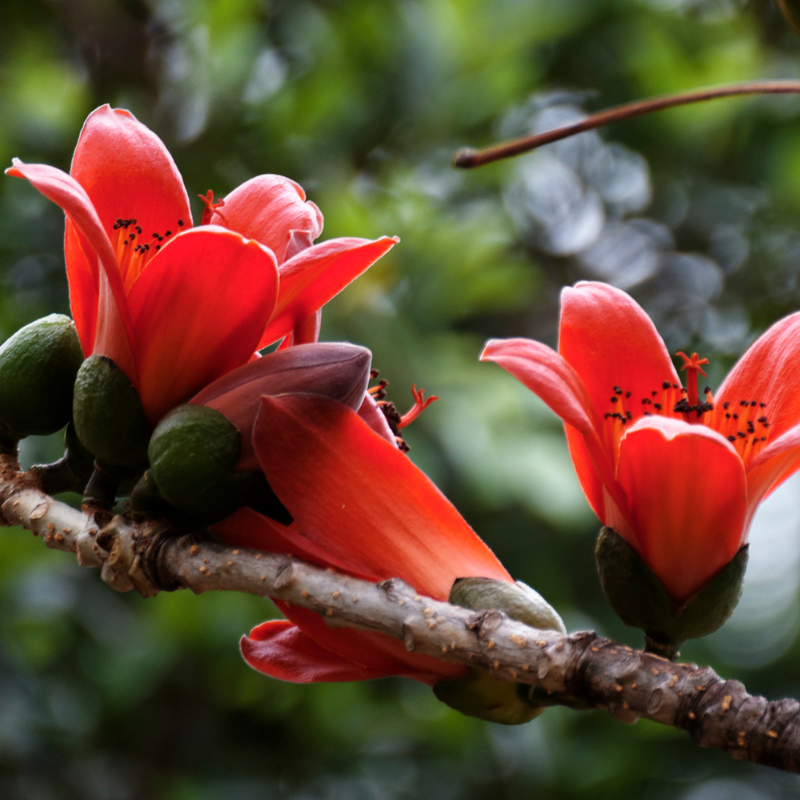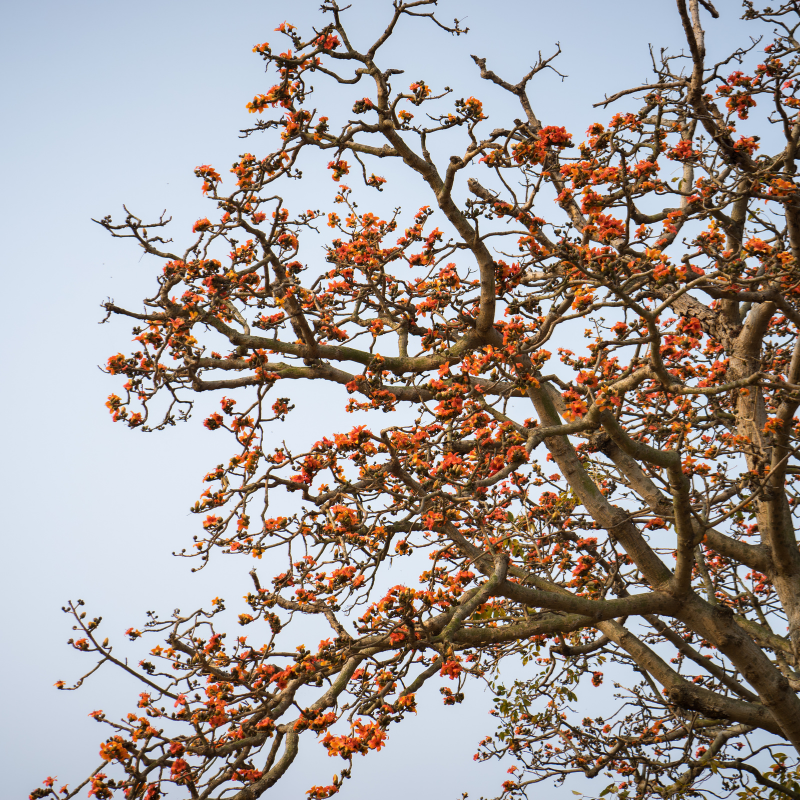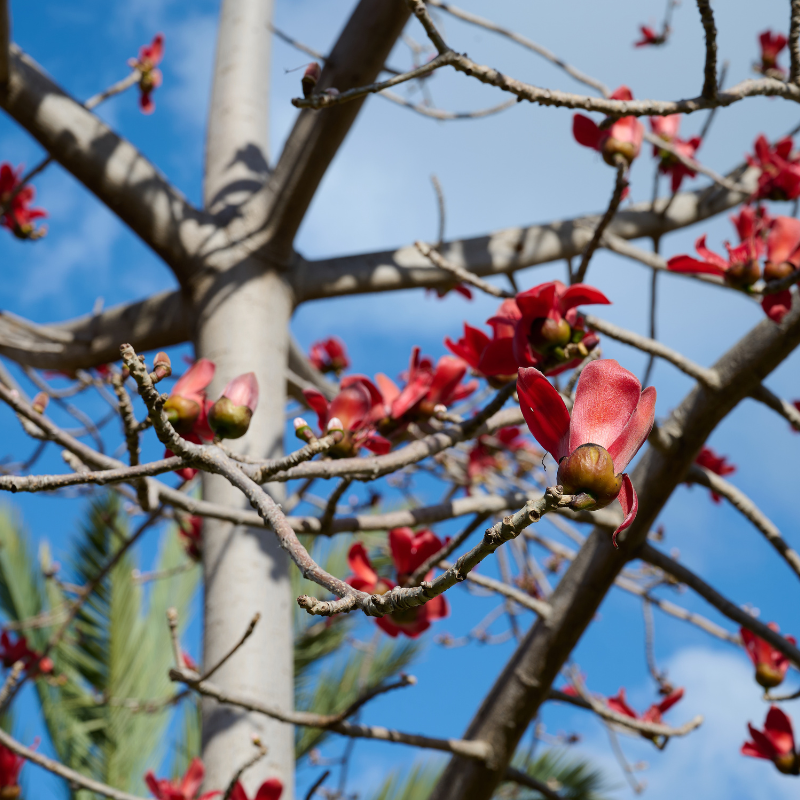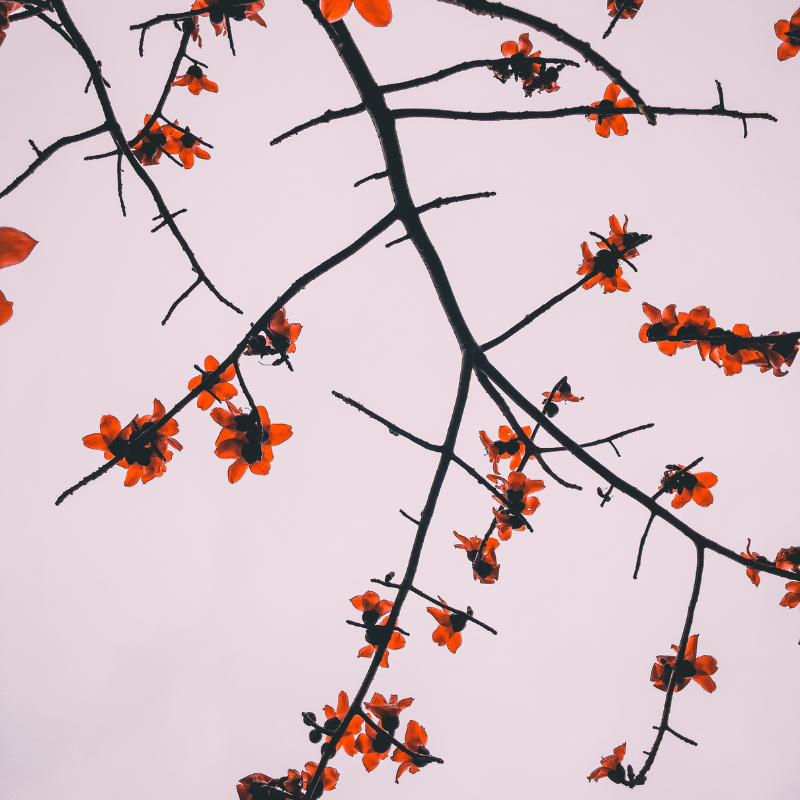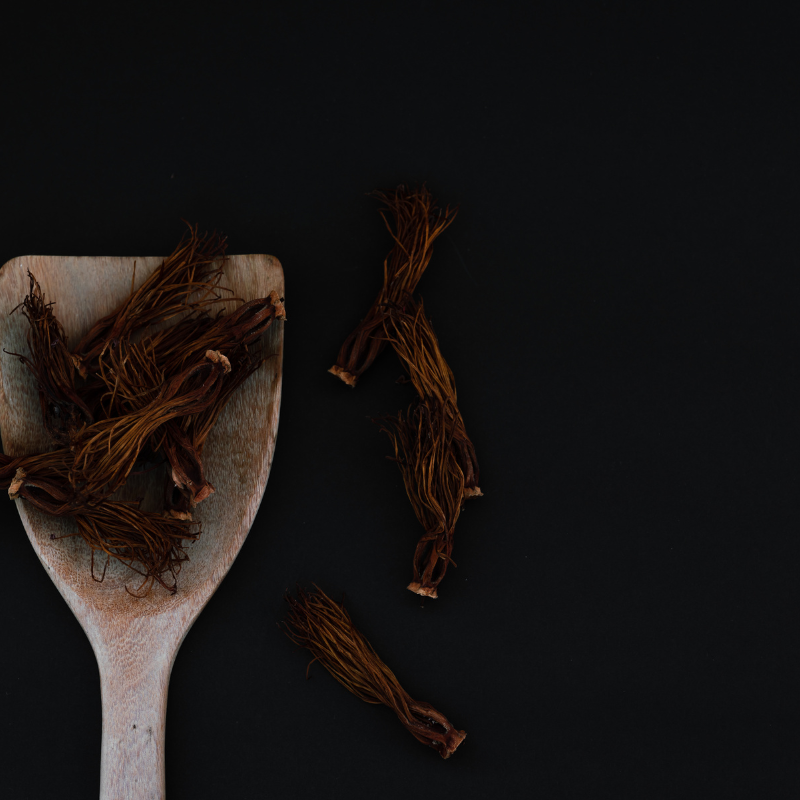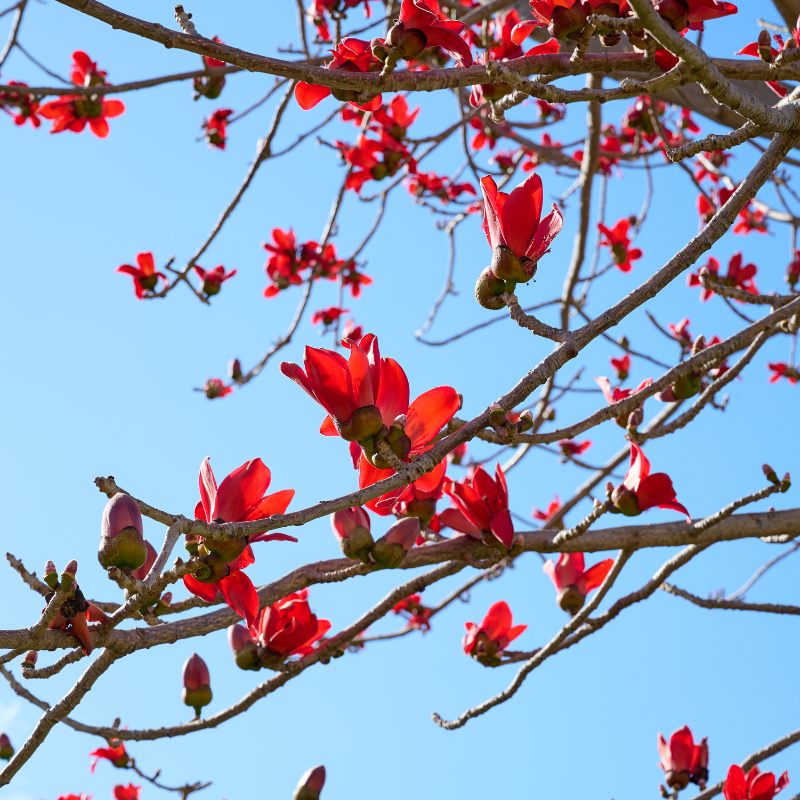Salmali (Bombax ceiba, Red Silk Cotton Tree) Seeds
Bombax ceiba, commonly known as Salmali, Red Silk Cotton Tree, or simply Silk Cotton Tree, is a large deciduous tree from the Malvaceae family. Native to South Asia, Southeast Asia, and Australia, this majestic tree is renowned for its vibrant red flowers, medicinal properties, and economic value. It is widely cultivated for ornamental, ecological, and commercial purposes.
Characteristics:
• Plant Description: Salmali grows up to 25–40 meters tall with a straight trunk and a wide, spreading canopy. Its thick, spiny trunk is a distinctive feature. The tree sheds its leaves in winter, and in early spring, it produces clusters of bright red to orange flowers that cover the entire canopy. The flowers give way to large, capsule-shaped fruits that contain silky fibers surrounding the seeds.
• Silk Cotton: The fibers inside the fruits are used for stuffing pillows, mattresses, and cushions.
• Climate Adaptability: Thrives in tropical and subtropical climates, tolerating a wide range of soils, including sandy and clayey types.
Uses and Benefits:
• Ornamental Value: The striking red flowers make it a popular ornamental tree for parks, gardens, and avenues.
• Timber: The wood is lightweight and used for making furniture, matchsticks, plywood, and packing cases.
• Medicinal Properties: Various parts of the tree, including its flowers, bark, and roots, are used in traditional medicine to treat conditions like inflammation, wounds, digestive issues, and respiratory ailments.
• Silk Cotton Production: The kapok-like fibers from its fruits are commercially used for stuffing and insulation.
• Ecological Role: The flowers provide nectar for bees, birds, and bats, while the tree serves as a roosting and nesting site for wildlife.
Cultivation:
• Sowing: Soak seeds in warm water for 24 hours before planting to improve germination. Sow seeds in well-drained soil in nursery beds or directly in the field. Cover lightly and keep moist. Germination occurs within 1–2 weeks.
• Growth Conditions: Prefers full sun and thrives in well-drained soils with moderate moisture. While it is drought-tolerant once established, young plants benefit from regular watering.
• Maintenance: A low-maintenance tree requiring occasional pruning to remove dead or damaged branches.
Unique Features:
• Spectacular Blooming: Its vivid red flowers create a breathtaking display, particularly in spring.
• Economic Importance: Provides timber, silk cotton fibers, and medicinal resources, supporting local livelihoods.
• Cultural Significance: Often planted near temples and in traditional landscapes for its beauty and utility.
Shipping:
Available for shipping within India and worldwide. Orders are typically dispatched within 1–2 weeks.
From Deodar Seeds Company.
Bombax ceiba, commonly known as Salmali, Red Silk Cotton Tree, or simply Silk Cotton Tree, is a large deciduous tree from the Malvaceae family. Native to South Asia, Southeast Asia, and Australia, this majestic tree is renowned for its vibrant red flowers, medicinal properties, and economic value. It is widely cultivated for ornamental, ecological, and commercial purposes.
Characteristics:
• Plant Description: Salmali grows up to 25–40 meters tall with a straight trunk and a wide, spreading canopy. Its thick, spiny trunk is a distinctive feature. The tree sheds its leaves in winter, and in early spring, it produces clusters of bright red to orange flowers that cover the entire canopy. The flowers give way to large, capsule-shaped fruits that contain silky fibers surrounding the seeds.
• Silk Cotton: The fibers inside the fruits are used for stuffing pillows, mattresses, and cushions.
• Climate Adaptability: Thrives in tropical and subtropical climates, tolerating a wide range of soils, including sandy and clayey types.
Uses and Benefits:
• Ornamental Value: The striking red flowers make it a popular ornamental tree for parks, gardens, and avenues.
• Timber: The wood is lightweight and used for making furniture, matchsticks, plywood, and packing cases.
• Medicinal Properties: Various parts of the tree, including its flowers, bark, and roots, are used in traditional medicine to treat conditions like inflammation, wounds, digestive issues, and respiratory ailments.
• Silk Cotton Production: The kapok-like fibers from its fruits are commercially used for stuffing and insulation.
• Ecological Role: The flowers provide nectar for bees, birds, and bats, while the tree serves as a roosting and nesting site for wildlife.
Cultivation:
• Sowing: Soak seeds in warm water for 24 hours before planting to improve germination. Sow seeds in well-drained soil in nursery beds or directly in the field. Cover lightly and keep moist. Germination occurs within 1–2 weeks.
• Growth Conditions: Prefers full sun and thrives in well-drained soils with moderate moisture. While it is drought-tolerant once established, young plants benefit from regular watering.
• Maintenance: A low-maintenance tree requiring occasional pruning to remove dead or damaged branches.
Unique Features:
• Spectacular Blooming: Its vivid red flowers create a breathtaking display, particularly in spring.
• Economic Importance: Provides timber, silk cotton fibers, and medicinal resources, supporting local livelihoods.
• Cultural Significance: Often planted near temples and in traditional landscapes for its beauty and utility.
Shipping:
Available for shipping within India and worldwide. Orders are typically dispatched within 1–2 weeks.
From Deodar Seeds Company.
Salmalia Malabarica, Bombax ceiba seeds - 10
- Brand: Deodar Seeds
- Product Code: DEC27
- Availability: In Stock
₹342.00

